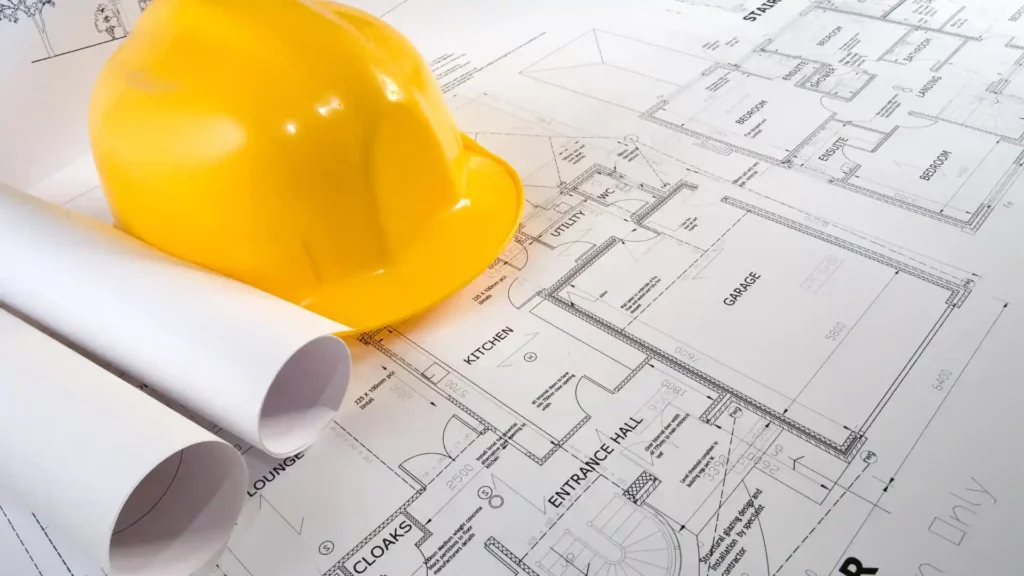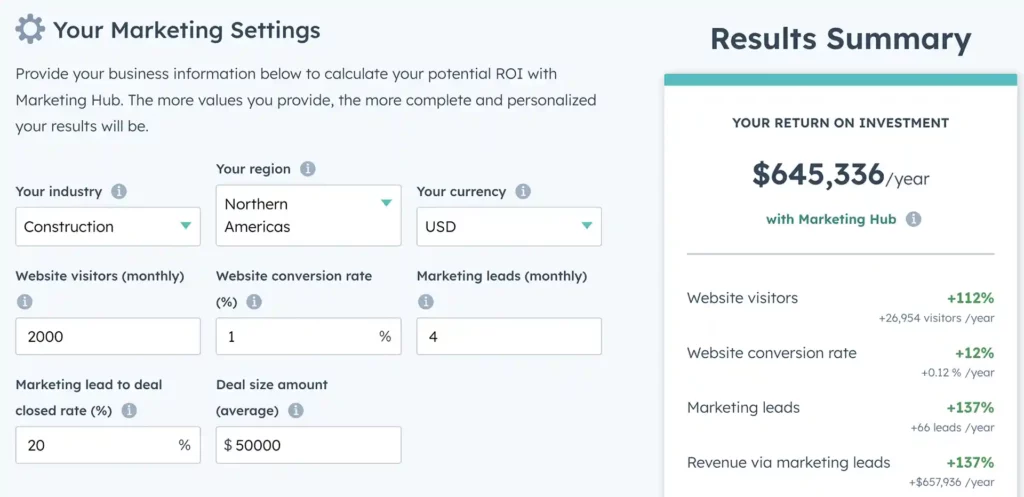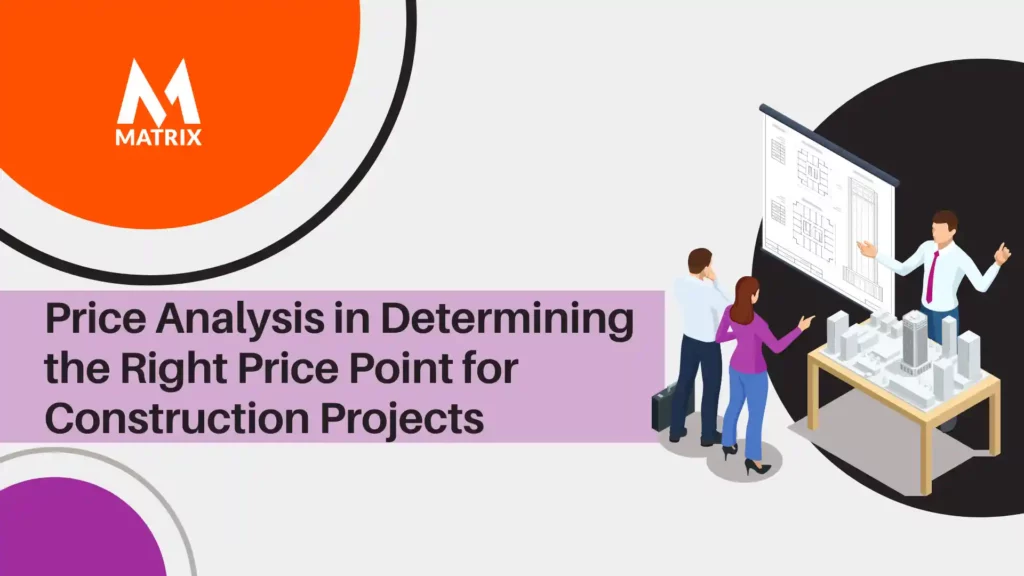Price Analysis for Construction Projects
Learn how a Price Analysis for Construction Projects can determine the right price point ‘strike zone’ for construction projects.
Cost and price analysis for construction projects are explored to help you determine the right proposed price for your products and services.
But for a project-based business like construction, it’s very important in tight bidding. But the bid could be made up of various pieces like labor plus materials.
Regarding construction projects, one of the most important aspects to get right is the price point.
This is especially true for contractors and other businesses that rely on construction projects for a significant portion of their income. Determining the right price point is critical to ensure the project can be completed while generating a profit.
Solar dealers and installers want to increase their sales.
Several factors go into determining the right price point. The most important of these is the cost of materials and labor. It is also necessary to consider the project’s overhead costs and applicable taxes or other fees. Finally, making a reasonable profit margin is important to ensure the business can continue to operate successfully.
It can be difficult to accurately determine all of these factors, so it is often helpful to consult with an experienced professional or use pricing calculators online. With a little research, it is possible to find a price point that will be profitable and acceptable to clients.
What are the construction project categories?

There are many different types of construction projects, each with its own set of unique challenges. Some of the most common project categories include
- Buildings: Residential and commercial construction projects. Building construction can be quite complex, and it is important to ensure that all the necessary permits are obtained before starting work.
- Infrastructure: This includes things like roads, bridges, and sewer systems. Infrastructure projects can be very large and expensive and often require significant coordination between contractors and agencies.
- Renovations: Home renovations can be a great way to add value to a property and are becoming increasingly popular. Renovation projects can range from simple repairs to complete overhauls, and it is important to plan to avoid surprises.
- Restorations: Historic restoration projects can be a great way to preserve important pieces of history, but they can also be quite challenging. It is important to ensure that any restoration project follows the relevant historical guidelines.
What type of construction businesses are there?
There are many different types of construction businesses, each with its own set of unique challenges. Some of the most common business categories include
- Contractors: Contractors specialize in a particular construction project. They may be general contractors, who oversee all aspects of a project, or they may be specialty contractors who focus on a specific area, such as plumbing or carpentry.
- Developers: Developers are businesses that purchase land and then build homes or other structures. They often work in partnership with contractors who handle the actual construction work and may also work with banks and other lending institutions to finance their projects. Digital marketing for commercial contractors can make life easy.
- Homebuilders: Homebuilders specialize in constructing new homes from scratch. They typically purchase land and build homes according to the customer’s specifications. Homebuilders often partner with developers and contractors to source materials and labor.
- Property managers are businesses that manage existing structures, such as apartment buildings or office complexes. They are responsible for ensuring the property is well-maintained and in compliance with applicable laws and regulations.
- Drywall Contractors: Drywall contractors specialize in installing drywall in residential and commercial properties. They typically measure, cut, and install drywall according to the customer’s specifications and repair or replace existing drywall. Digital marketing for Drywall Contractors can make life easy.
- Masonry Contractors: Masonry contractors specialize in brickwork and other types of masonry construction. They typically measure, cut, and lay bricks according to the customer’s specifications and clean and maintain the finished product.
These are just a few of the many types of construction businesses available. Each type has unique challenges; some may require specialized skills or experience that not all contractors possess.
When looking for a contractor, it is important to ensure they have the necessary qualifications and experience to complete the job successfully.
How do you bid on a construction project?

When bidding on a construction project, it is important to understand the work scope clearly. This includes estimating the time and materials needed to complete the project and calculating the cost of labor and subcontractors. It is also important to understand the local market conditions so that you can price your bid accordingly.
The construction cost analysis and estimating pdf could be emailed. We like all proposals to be tracked through HubSpot with Proposify to keep track of progress.
CONTENT & BRAND MANAGEMENT
Protect your assets from inconsistencies and reps going rogue. Create impressive proposals with impactful content, and rest assured they will stay accurate and accessible by setting up a solid framework that matches your workflow.
POWERFUL INSIGHTS
Proposify removes the black box from the most important stage of your sales process…the close. Get insights needed to understand and scale your process, make timely engagements, and increase accuracy in your forecasting.
Be able to do a construction project analysis with construction project cost breakdown and can be downloaded for:
- Cost analysis in construction pdf
- project cost estimation example pdf
ELEVATED CLIENT EXPERIENCE
Make the closing buyer’s journey easy and one to remember for your prospects. Customize the experience to appeal to their preferences so that they can view, engage, and sign documents the best way.
Once you have put together a detailed proposal, you must submit it to the customer. It is important to ensure that your proposal is thorough and well-organized, so the customer can easily understand what you are proposing. If the customer is interested in your proposal, they will contact you for further negotiations.
If the customer accepts your proposal, you must sign a contract and provide a deposit to secure the job. The final payment will typically be due upon completion of the project. It is important to ensure that all of your paperwork is in order before starting work on the project, as any mistakes can lead to delays and additional costs.
The strategic importance of price demonstrates how the product, distribution, price, and promotion strategies must fit into an integrated marketing strategy and product positioning. Analyzing the pricing situation is necessary to develop a price strategy. This includes a mix or product line or selecting a price strategy for a new product or brand.
Price strategies are classified according to the company’s price relative to the competition. How active promotion of price will be in the marketing program. Price policies and structures must also be determined for new products as well.
Price Analysis for Construction Projects

Pricing analysis is important if you want to make a profit. How do I price construction projects? Who is involved? What is the customer’s budget?
- Evaluating new solution ideas
- In test marketing
- In selecting an introduction strategy
- Positioning strategy
The price analysis is necessary for existing products due to changes in the target market and competitive environment. Also, the unsatisfactory performance of products and modifications in marketing strategy over the product’s lifecycle.
Analyzing the pricing situation includes
- Establishing the product market’s responsiveness to price
- Determining product cost
- Analyzing competition
- Assessing legal and ethical constraints
I will explore how performing price and cost analyses will get your pricing right for bids or proposals.
Product Market Responsiveness to Price
One of the challenges of pricing in a new industry is estimating how buyers will respond to alternative prices. The pricing of software for personal computers illustrates buyers’ difficulty evaluating these products’ applicability and cost benefits.
A SaaS software manufacturer offered a new program at $99 and supported it with an aggressive advertising campaign. Experimenting with alternative prices and no advertising, marketing management chose $99 after encountering buyer resistance above $100. Since the software is sold based on features and performance. Buyers did not consider the program competitive.
Product market analysis concerning price should answer the following questions:
- How large is the buying potential of the product market?
- What segments exist in the product market, and what is the market target strategy to use?
- How sensitive is demand in the segments of interest to changes in price?
- How important are non-price factors, such as features and performance?
- What are the sales forecasts at different price levels?
Price Elasticity and Price Analysis for Construction Projects
Price elasticity is the percentage change in the quantity demanded when the price changes, divided by the percentage change in price. Elasticity is measured for changes in price from some specific price level and is not necessarily constant over the range of prices under consideration.
Research indicates that people will buy more of certain products at higher prices. That’s establishing a price-quantity relationship that slopes upward to the right. People use price as a quality measure because they cannot evaluate the product.
Estimating the exact shape of the demand curve is impossible in most instances. However, there are ways to estimate the sensitivity of sales to alternative prices.
Analysis of historical price and quantity data may be helpful. Test marketing can be used for this purpose. And user research studies, such as consumer evaluations of price, are also used.
These approaches, coupled with management experience, determine the sensitivity of sales to price in various prices under consideration.
Non-price Factors Price Analysis for Construction Projects
In addition to price, various factors may be important in analyzing buying situations. Buyers may be willing to pay a premium price to gain other advantages. Or instead, be willing to forgo certain advantages for lower prices.
The price of a product facing competition can be separated into two components:
- The commodity price fluctuates with the ebbs and flows of supply and demand
- One or more companies may achieve the premium price differential due to customers’ perceived values
- Building trust
Certain purchasing situations may reduce the importance of price in the buyer’s selection process. The product’s price may be a minor factor when the amount is relatively small compared to the importance of the use case.
Examples include infrequently purchased electronic parts for home entertainment equipment, batteries for appliances, and health and beauty products during a vacation. The need for important but inexpensive parts for industrial equipment is another situation that reduces the role of price in the buyers’ purchasing decisions.
Forecast – Price Analysis for Construction Projects
A sales forecast is needed for a range of prices that management is considering. The goal is to estimate unit sales for each product at a price under consideration. Combined with cost estimates, these forecasts enable management to examine the financial impact of different price strategies.
Forecast commercial buildings take months, if not years, to stay on the radar as zoning hurdles are jumped.
Assuming all other marketing program influences remain constant, elasticity estimates can be used to develop sales projections.
The parity price (Step 1) corresponds to an index value of 100. This indicates that the company’s price is equal to the average for the product category in which it competes. Then in steps 2 and 3, the effects of price changes are estimated. Using these relative elasticity measures, the forecast can be made from test market data or historical sales data in the case of existing products.
There are many forecasting situations. The effects of other factors must be included in the analysis. Control testers are used for this purpose. Experimental design measures the effects of factors other than price. Can you think of different ways to use pricing as a differentiator?
Cost Analysis – Price Analysis for Construction Projects
Here is an example of marketing projects for a construction company to keep projects coming in. We have built cost calculators to drop right into your website for lead generation.

Product costs provide essential information for pricing decisions.
First, analyze the structure of the direct and indirect costs of producing and distributing the product. This involves determining fixed and variable components of cost. Also, find the portion of product costs accounted for by supplier purchases.
A large portion of the cost of autonomous vehicles comprises components produced by suppliers. It is useful to separate cause components into labor, materials, and capital categories and study cost structure. If you work for a larger company, you can often employ the cost account to help you with these figures.
Stage B of cost analysis examines the cost elements and volume relationships.
- How did cost vary at different levels of production or quantities purchased?
- Can economies of scale be gained over volume range, given the target market and intended program positioning strategy?
- At what volumes are significant cost reductions possible?
The main task of the analysis is to determine the volume produced or distributed that should be considered when selecting a price strategy.
Stage C analyzes competitive advantage. Comparing key competitors’ costs is valuable. Are they higher, lower, or about the same? Experienced marketing managers often make accurate estimates.
The important consideration is placing key competitors into relative product categories. You can estimate competitive cost information based on wage rates, material costs, production plants, and related information.
Stage D of the cost analysis considers the effect of experience on cost. Experience or learning curve analysis indicates the cost and prices for some product decline by a given amount each time the number of units produced doubles. Price declines are sometimes uneven due to competitive factors.

The experience curve effect should be examined on an industry and company basis and see if action is not the same across all product categories. There are several issues to be evaluated. This includes your experience curve estimation, including the effect of product data aggregation, errors, variables, the relationship’s functional form, and measurement.
The experience curve can be estimated. Start by using the total direct cost required to produce the first unit and the Improvement rate due to experience.
Cumulative total direct cost at any point will be equal to the cost of the first unit times the number of units raised to the power equal to 1 minus the improvement rate. The improvement rate ranges between 0 and 1, and the equation for cumulative cost is:
(Unit 1 cost) x (Number of units)1- Improvement rate
Finally, in stage E, marketing management should determine how much influence the firm may have over cost.
To what extent can research and development, bargaining power with suppliers, process innovation, and other factors reduce costs over the planning horizon?
The bargaining power of an organization and its channels of distribution. These considerations are interrelated with experience curve analysis and may operate over a shorter time range. For example, it can majorly affect costs, and the effects can be immediate.
Wrap-up
Underlying strategy formulation is several important strategic activities. This includes an analysis of the product market and cost considerations. This analysis indicates the extent of price flexibility.
Be sure to do your research and price analysis. This will help you appropriately position your product or service and target market. Get it right in your sales will grow.
What is your best tip for price analysis?
And don’t forget to share this with a peer or friend.
What is the average cost of a construction project?
The average cost of a construction project can vary depending on the size and complexity of the project. Generally speaking, smaller projects (less than $50,000) will be less expensive than larger projects. However, many factors can affect the total cost, such as the cost of materials and labor.
What are the most common types of construction businesses?
Many types of construction businesses are available, but some of the most common include Homebuilders, Property managers, Drywall contractors, and Masonry contractors.
What are the unique challenges of contracting?
One of the unique challenges of contracting is getting paid on time. This can be a challenge, especially if you are working with a new customer or one that is not very established. It is also important to ensure that you have a good contract, so both parties know what is expected.
How do you submit a bid for a construction project?
To submit a bid for a construction project, you must submit a proposal outlining the scope of work and the cost of labor and materials. You will need to submit the proposal to the customer for further negotiations. If the customer accepts your proposal, you must sign a contract and provide a deposit to secure the job. The final payment will typically be due upon completion of the project.

